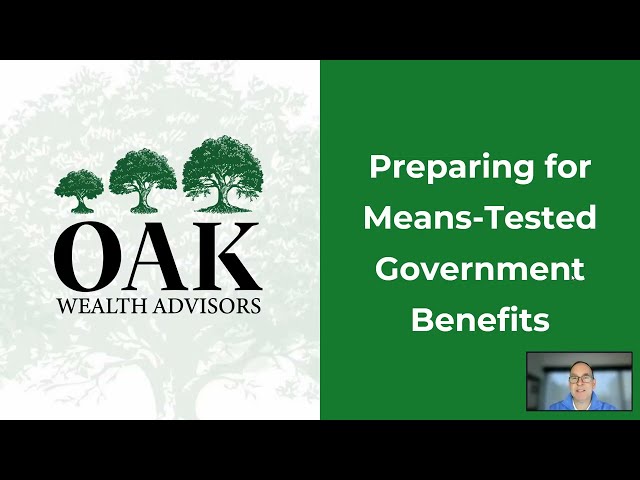Summary
Worried about your loved one losing their benefits because their assets currently exceed $2,000? We offer solutions for individuals seeking benefits or trying to maintain them who face this asset limit challenge.
Watch Video Below
Hi, I’m Mike Walther with today’s special needs financial planning tip, and this is an advanced tip really for use by a family where their loved one who wants to apply for benefits has way too many assets in their name prior to applying, or once they’re receiving means-tested benefits gets a large inheritance that was not properly directed into their third-party special needs trust.
So as we know, an individual can own the following items and not run afoul of having too many assets for means-tested benefit purposes. Those are: they can have a house of any value that they live in, they can have one car, they can have personal effects, and they can have $2,000 of other financial assets.
And that last piece is the one that typically gets people thrown out of the means-tested benefit programs because they have too many financial resources.
So let’s say we’re looking to apply for benefits and we know we have to get our assets down below $2,000, but maybe there’s $100,000 in various savings accounts that were accumulated over time. Person’s very fortunate, had some generous donors over time and they’re sending a lot of money.
Well, there are some basic planning tips we’ll use to get that number down below $2,000, but in some cases there might be too much money. So families say, well, why don’t we just give it to a parent or other relative and get it out of their name? What if we just spent it down on other people in the family or others in the community or charities to get us down to that $2,000 threshold?
Well, unfortunately these two strategies don’t work and in fact would cause the individual to have what’s called a look-back period of multiple years before they’d be eligible to get benefits. So that really would delay the timing of getting goods and services from the government. We don’t want to do that.
So the basic planning techniques would be to use an ABLE account, into which we can fund up to $19,000 a year. And that’s again from any person. So the individual, him or herself, can put up $19,000 of cash into that. Or you could use it to buy needed technology or other things they want.
That’s the basic spend-down methodology where you use it to buy things for that person’s benefit. As long as it’s for their sole benefit, that works and that’s not a problem.
Or you could set up what’s called the first-party special needs trust, which is a special needs trust funded with the person’s own assets. But when you use the trust, you now are going to have a tax obligation every year. You’re going to have to file a tax return, so it adds additional complexity and financial cost to the family in having an additional trust that’s got to be managed over time.
Is there another solution? Is there a solution that might allow that individual to get the money up to the parents who would then use it to spend for their loved one’s benefit and not run afoul of all these rules?
Well, the answer is yes, but it’s not one that’s typically discussed and not even well known within the financial planning circles. And that is to utilize a long-term contract for the individual’s benefit. It can be really one of two things typically, one of which is a long-term housing contract where you basically sign a long-term lease—5–10 years, whatever it might be. Or a long-term contract for services where, let’s say, a mother or a father is going to provide care for that individual at a reasonable rate for what it’s charged in that community.
In doing so, you can get hundreds of thousands of dollars out of their name by doing a prepaid contract. Let’s say that the rent is going to be $1,000 a month for 10 years. OK, so that’s going to be $12,000 a year, $120,000 a decade. That allows you to move $120,000 out of that individual’s name into the parent’s hands and immediately get access to government resources—or continue receiving resources if the $120,000 was to land in their lap while they’re already getting those program services provided.
So that’s the tip for today. Keep that in mind. If the individual ever ends up with a large sum of money and you’re trying to figure out how to most efficiently get it out of their name, using a long-term contract can be a wonderful solution.
We’d encourage you to work with your local attorney to set that up correctly. But that’s a wonderful, quick way to stay on benefits.
If you have any other questions about your planning, feel free to reach out to our team at Oak Wealth Advisors, check out our Special Needs Voice podcast, and look at us on the socials. We hope you have a great rest of your day.
The post Creative Spend Down Solution | Video appeared first on Oak Wealth Advisors, LLC.





